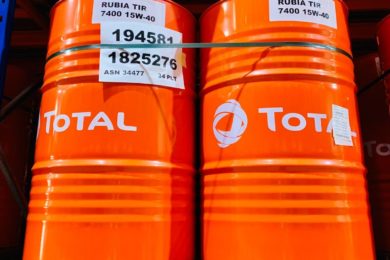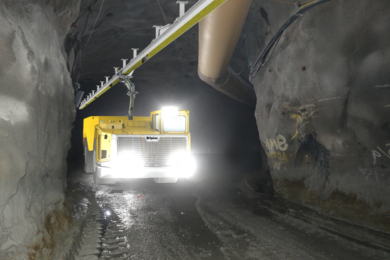One of the more challenging tasks to maintain on a mine site is the safe storage and handling of lubricants and greases. Global supplier of lubricants to the mining industry, Total, says safety is one of its core values and an integral part of the group’s processes and argues that a deeply instilled culture of safety, including with regard to lubricant storage, leads to reliable procedures and operations, and ensures sustainable growth, productivity and profitability.
Total states: “The method of lubricant storage (bulk, container, drum, can) is dependent upon the volumes stored, the consumption rate of lubricants, supplier delivery frequency and also maintenance habits. Making the right choice of containers will avoid having too much stock that leads to capital costs and reduces the risk of exceeding the expiry date of the products. An effective storage method also limits the risk of pollution and degradation of the product during its storage time.” Total Lubricants always recommends following the FIFO (First In, First Out) approach when it comes to storage, and to check the manufacture date to ensure the oldest products are being used first. This approach helps reduce inventory obsolescence costs by ensuring packaged product are utilised prior to reaching the end of the product life.
Wherever possible product rationalisation can be considered whilst still following the requirements of the OEM. John Saunders and Clay Calk of Lubrication Engineers, Inc in their article, The Benefits of Lubricant Consolidation, described the associated costs as a result of decrease in physical inventories of between 6% and 19% of the total cost of lubricants. Reducing the number of inventories also helps to minimise the risk of using the incorrect product, as well as lower storage costs and capital risks.
The types of storage include bulk storage, stacking on pallets and shelf storage. Each of these methods is intended to ensure storage under the best conditions of cleanliness and safety. For bulk storage, metal or plastic tanks should be chosen. Tanks needs to be labelled in accordance with Australian Standards legislation and include the Tank identification number, flow in and flow out and product name so it’s clearly visible to all which tank is for which product. For pallet stacking, the maximum storage height for pallet stacking must be determined with consideration for the safety of handlers. It is recommended not to store more than two pallets high. For pallets stored in racking, it needs to be appropriately labelled with weight restrictions and drums should be strapped when above two pallets high. Shelves for storing at height must be designed and installed to prevent falls. Oil drums must be stored preferably horizontally on their sides with the two bungs aligned horizontally. This also makes it easier to identify and read the product labels.
“Moderate storage temperatures should be maintained at all time. Indoor storage of lubricants is recommended, but if lubricants need to be stored outdoors, keep track of lubricant consumption strictly and replenish stock in a timely manner to minimise exposure to external conditions. In the case of greases, storage in drums in a vertical position is recommended to keep the original seals around the drum tight to prevent potential leaks and/or contamination. Whenever oil drums need to be stored upright, sheltered storage is preferred. If it is not possible, individual drum covers is highly recommended to avoid possible contamination from dust or the elements such as rain or snow. This approach of improved lubricant cleanliness helps extend component life.”
For all lubricants and grease storage, Total states that it is essential that appropriately sized spill kits, fire extinguishers, eye wash and shower facilities are readily available in the event of an emergency, along with easy access to the latest updated Material Safety Data Sheet (MSDS) for each product stored onsite.










